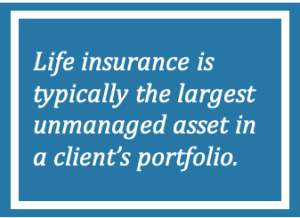Facts About Pacific Prime Revealed
Facts About Pacific Prime Revealed
Blog Article
The Buzz on Pacific Prime
Table of ContentsWhat Does Pacific Prime Do?Pacific Prime for BeginnersAbout Pacific PrimeTop Guidelines Of Pacific PrimeUnknown Facts About Pacific Prime

This is since the data were accumulated for a period of strong financial efficiency. Of the approximated 42 million people that were without insurance, almost about 420,000 (regarding 1 percent) were under 65 years old, the age at which most Americans come to be eligible for Medicare; 32 million were grownups in between ages 18 and 65, about 19 percent of all adults in this age team; and 10 million were youngsters under 18 years of age, concerning 13.9 percent of all children (Mills, 2000).
These quotes of the number of individuals without insurance are generated from the annual March Supplement to the Existing Populace Survey (CPS), carried out by the Demographics Bureau. Unless otherwise noted, national price quotes of people without medical insurance and percentages of the population with different kinds of protection are based upon the CPS, one of the most widely used source of quotes of insurance protection and uninsurance prices.
Rumored Buzz on Pacific Prime

Still, the CPS is particularly helpful because it creates yearly quotes relatively rapidly, reporting the previous year's insurance policy protection approximates each September, and since it is the basis for a consistent collection of estimates for greater than two decades, enabling evaluation of patterns in insurance coverage with time. For these factors, along with the considerable usage of the CPS in various other researches of insurance coverage that exist in this report, we rely on CPS price quotes, with restrictions kept in mind.

The estimate of the number of without insurance people expands when a populace's insurance policy condition is tracked for numerous years. Over a three-year period starting early in 1993, 72 million people, 29 percent of the united state population, were without coverage for at the very least one month. Within a single year (1994 ), 53 million people experienced at the very least a month without insurance coverage (Bennefield, 1998a)
6 out of every ten uninsured grownups are themselves employed. Although functioning does enhance the likelihood that one and one's household participants will have insurance policy, it is not an assurance. Also participants of households with two full time breadwinner have virtually a one-in-ten possibility of being uninsured (9.1 percent without insurance rate) (Hoffman and Pohl, 2000).
Not known Details About Pacific Prime
New immigrants account for a considerable percentage of people without health and wellness insurance. One analysis has associated a substantial portion of the recent growth in the dimension of the united state without insurance populace to immigrants that got here in the nation between 1994 and 1998 (Camarota and Edwards, 2000). Recent immigrants (those who came to the United States within the previous 4 years) do have a high price of being uninsured (46 percent), but they and their kids make up simply 6 percent of those without insurance coverage country wide (Holahan et al., 2001).
The partnership between health and wellness insurance policy and accessibility to care is well developed, as documented later in this chapter. The partnership in between health and wellness insurance and health and wellness end results is neither straight neither basic, an extensive scientific and health and wellness services research literature links health and wellness insurance coverage to better accessibility to care, much better quality, and improved individual and populace health and wellness status.
Degrees of analysis for analyzing additional hints the effects of uninsurance. It concentrates specifically on those without any type of health and wellness insurance policy for any kind of length of time.
The 10-Second Trick For Pacific Prime
The troubles faced by the underinsured are in some respects comparable to those faced by the uninsured, although they are normally much less serious. global health insurance. Uninsurance and underinsurance, nonetheless, involve distinctly different plan issues, and the strategies for resolving them might vary. Throughout this research and the 5 reports to adhere to, the major emphasis is on individuals without medical insurance and thus no assistance in paying for wellness care past what is readily available with charity and safeguard establishments
Health and wellness insurance is an effective variable impacting invoice of care due to the fact that both clients and physicians react to the out-of-pocket rate of services - https://pacificpr1me.start.page. Health insurance coverage, nevertheless, is neither required nor enough to get to clinical solutions. The independent and straight impact of health and wellness insurance protection on accessibility to wellness solutions is well established.
Others will certainly obtain the healthcare they require even without health insurance policy, by spending for it out of pocket or seeking it from service providers that provide treatment complimentary or at highly subsidized prices. For still others, medical insurance alone does not ensure invoice of treatment since of various other nonfinancial obstacles, such as a lack of health and wellness treatment carriers in their neighborhood, restricted access to transport, illiteracy, or linguistic and cultural distinctions.
The smart Trick of Pacific Prime That Nobody is Talking About
Formal research study about uninsured populaces in the United States dates to the late 1920s and early 1930s when the Committee on the Expense of Healthcare produced a series of reports about financing doctor office brows through and hospitalizations. This problem came to be prominent as the varieties of medically indigent climbed throughout the Great Clinical depression.
Report this page